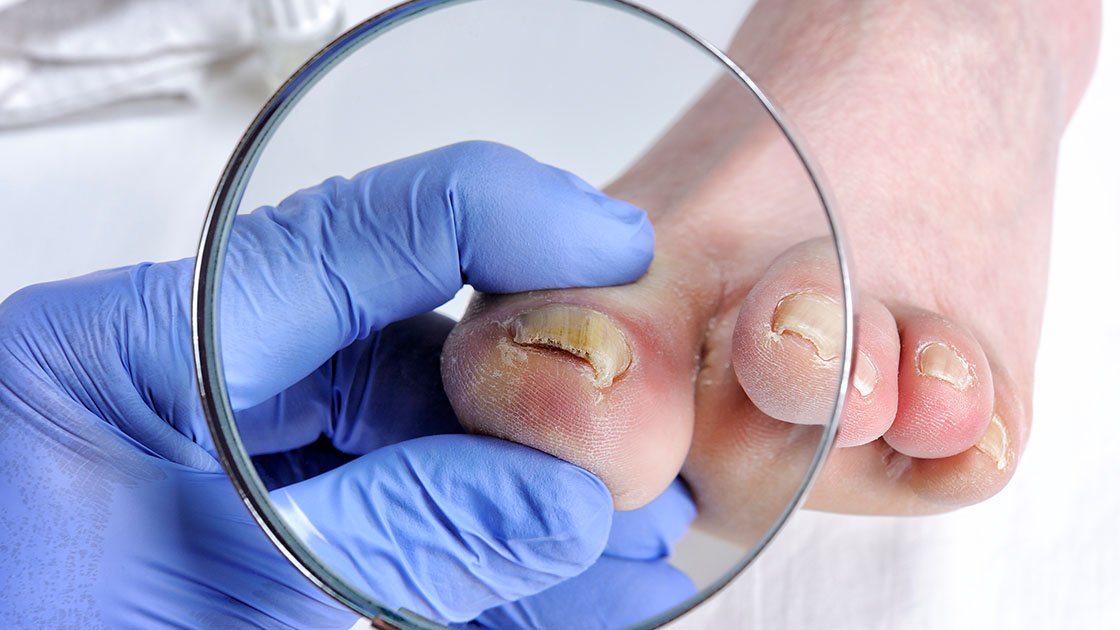Page Contents
Laser therapy for toenail fungus is a revolutionary treatment option that offers a promising solution to a common and persistent problem. Toenail fungus, medically known as onychomycosis, can be challenging to treat with traditional methods. It often requires long-term medication use or invasive procedures. However, laser therapy provides a non-invasive and highly targeted approach to address this condition. By utilizing focused laser energy, this innovative treatment targets the underlying fungal infection, promoting the destruction of the fungus while leaving the surrounding healthy tissue unharmed. In this article, we will discuss more details about laser therapy for toenail fungus, highlighting its role as a valuable treatment option for patients.
How Laser Therapy Treats Toenail Fungus
Class 4 laser devices emit pulses of energy that produce heat. When treating onychomycosis, the laser emits pulses so the heat penetrates both toenail and nail bed where fungus thrives -offering relief to affected patients. Under heat treatment, infected tissue turns to gas and disintegrates into pieces that destroy both fungus as well as surrounding skin and nails. Laser heat also has sterilizing effects which help stop any further fungal growth.
Laser treatment does not emit enough energy to completely eradicate tissue or an infection at one go; hence repeat treatments may be required.
Laser therapy inhibits fungal growth while killing some fungal microorganisms; however, since some infections may still survive treatment, it’s unlikely you’ll see full relief with just one session of laser therapy.
What is the Effectiveness of Laser Therapy in Treating Toenail Fungus?
Laser therapy has shown promising effectiveness in treating toenail fungus. It is considered a non-invasive and relatively painless treatment option that targets the underlying fungal infection without causing harm to the surrounding tissue.
Several studies have reported positive outcomes with laser therapy for toenail fungus. The success rates vary, but clinical trials have shown an average improvement in nail appearance and reduction in fungal infection ranging from 60% to 80% after a series of treatments.
However, it’s important to note that individual results may vary, and some cases of severe or recurring toenail fungus may require multiple treatment sessions for optimal results.
Laser therapy for toenail fungus is generally considered safe, with no side effects during the procedure. It is often recommended for individuals who prefer a non-pharmaceutical approach or those who cannot tolerate or do not want to use oral antifungal medications due to potential side effects.
What to Expect
At your initial laser nail fungus consultation, your provider will discuss symptoms. Onychomycosis can typically be diagnosed by looking at how nails appear; however, they may take samples for microscopic examination if required.
Your laser treatment will be administered by a healthcare provider such as a dermatologist, family doctor or podiatrist. Furthermore, debridement (toenail trimming and skin cleaning) might take place either the same day as or just prior to laser treatments.
At the outset of treatment, your foot will be carefully cleansed with a sterile solution and placed in an accessible location so the provider can use laser therapy on any affected nails, as well as non-affected ones if there’s concern that fungus could be growing there.
Pulsing laser therapy or selecting specific wavelengths helps minimize heat on the skin and thus lessening risk for side effects. Each session typically lasts no more than 30 minutes.
Signs of Improvement
Clearer Nail Appearance: Clearer and healthier-looking nail. The affected toenail may start to appear less discolored, yellowed, or opaque. Instead, it may regain a more natural and transparent appearance.
Reduction in Thickness: Toenails affected by fungus often become thickened and brittle. With successful laser therapy, the thickness of the nail may gradually decrease, leading to a thinner and more normal-looking nail.
Smoother Texture: Fungal infections can cause the nail surface to become rough, pitted, or crumbly. As the treatment progresses, the surface texture of the toenail may become smoother and less irregular.
Decreased Discomfort: In some cases, toenail fungus can cause pain, discomfort, or sensitivity around the affected nail. As the fungal infection subsides, individuals may experience a reduction in pain and discomfort, leading to improved overall foot comfort.
Enhanced Nail Growth: Laser therapy can stimulate healthier nail growth from the base of the nail bed. As the treatment progresses, the new nail growth may appear healthier, stronger, and less prone to fungal infection.
